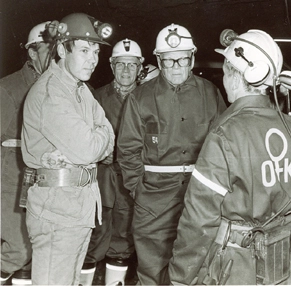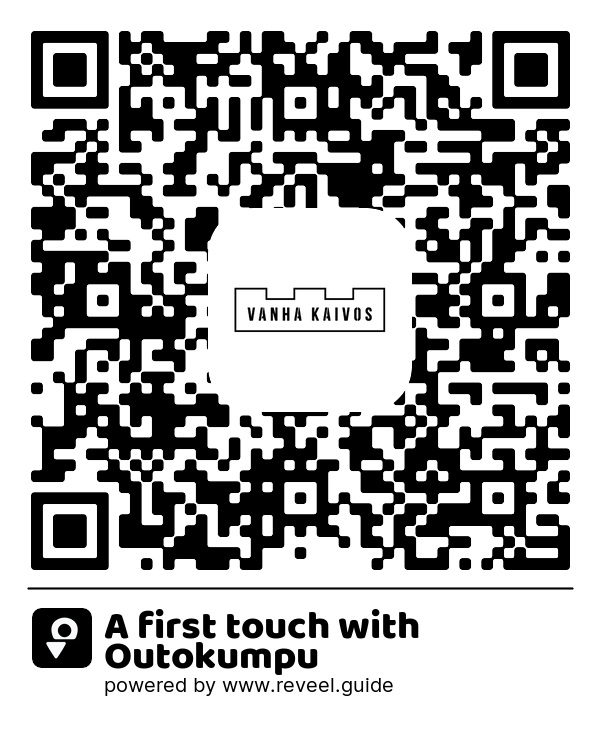
A first touch with Outokumpu


A first touch with Outokumpu
I had by chance ended up studying at the Mining Engineering program of the Department of Mining at the Technical University in the fall of 1963. In addition to an internship for the excavation work at the Iijoki power plant site, I completed short internships in addition to the excavation work at the Iijoki power plant site at the Raajärvi, Vihanti, and Kotalahti mines during my studies.
When my studies were nearing completion, my task was to find a so-called thesis project. I was particularly interested in the excavation side. Professor Järvinen recommended the Otanmäki mine and the implementation of rock pressure measurement systems there. I mentioned that I had visited Pyhäsalmi to learn about the glass cell research used in flotation studies. Professor Järvinen remarked that it wasn't worth going to Pyhäsalmi since no mine managers would come from the concentration side anyway. The Outokumpu mine had suggested the topic of Construction Work in Mines and their Modernization. I also knew that the Outokumpu team played baseball at the highest league level. Since I was able to play for this team, this settled my thesis project location.
In April 1967, I traveled by train from Espoo to Joensuu, where the family of my wife's sister lived. On Wednesday morning, the family's father drove me to Outokumpu. As we approached Outokumpu, I was amazed when the tall mining tower (Keretti) came into view. After driving a short distance further, another mining tower (Old Tower) appeared. Before we turned off the Kuopio road into Outokumpu, a third tower (Mökkivaaran Tower) emerged. I had never been to Outokumpu before. The image I saw before me at that time is still vividly etched in my memory nearly 60 years later.
As we drove towards the city center, we passed the White Office. At that point, I got out of the car. I climbed the stairs at the front and went in through the large glass doors. I asked the first person I met where Esko Pihko's office was. I learned that his office is three kilometers away at the Keretti mine. Then I inquired about where I could find Toivo Riikonen, as he was the manager of the baseball team. I was directed to his home on Sänkinotko Street. Toivo served as the company's police officer and held his office at home. With his "Wolsk," I then got a ride to the Keretti office and to Esko Pihko. I met a gray-haired, restrained gentleman. We discussed the thesis job and the topic. Before we made an agreement, he asked if I was related to Masa Hakola. I told him that the person in question was my father. Esko recalled having admired his achievements in baseball matches in Viipuri as a boy. At that moment, it felt like an invisible bond was formed between us. That bond lasted until Esko's death. Later, I realized that I had received the best boss from Outokumpu Company.
I had participated in a few practice matches of the local baseball team (Outokummun Partio) in Imatra, so I knew some people when I arrived with my pregnant wife Hilkka in a car borrowed from my father to Outokumpu on the eve of Mother's Day. My workplace was on the upper floor of the maintenance building in Keretti, in the office of the mine's construction manager, Reino Hanhimäki. Under his guidance, I got to know the underground mine. The first elevator ride was to the 250 level of the Old Shaft. It was dark, damp, and quite cool, even though it was the peak of summer. Everything was strange and new. We descended to the 320 level via 80-meter-long stairs. There, at the end of tunnel p2, a "taxi" (transport cart) was waiting, which took us three kilometers to the Keretti shaft and back to the surface by elevator. At that time, I could not imagine that this environment would become a beloved workplace for me, from which I retired nearly 30 years later and began serving as a volunteer at the Outokumpu Mining Museum.
Outokumpu “embraced” us. The people were open and helpful. Before my wife arrived with our firstborn from the Joensuu Central Hospital, three volunteer women came and cleaned our home so that the mother would have the joy of coming home with the newborn to a well-cleaned.
-Arto Hakola
